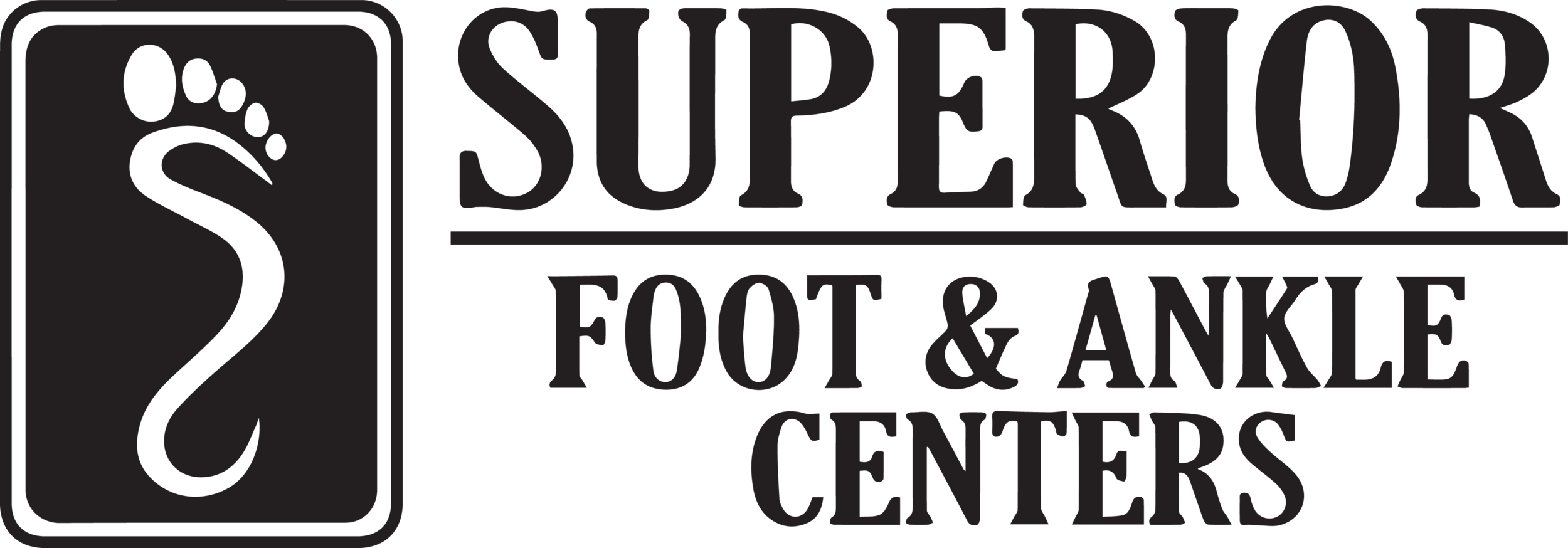NEW CLASSIFICATION AIDS IN TREATMENT OF FALLING ARCH
Some years ago, a beat cop patrolling our streets was called a flatfoot. Was this because they developed a flattened foot from walking the pavement all day? That particular variation on human anatomy used to be sufficient to keep someone out of the military. And yet, Walter Payton, the famous football player, had flat feet and it certainly didn’t stop him. How bad can it be to have a flatter foot type?
Human variability is legendary. In many respects, we are all different, especially in how our bodies are shaped and how well all the bones and joints, ligaments and tendons, all work together. This topic is incorporated in the term ‘biomechanics’ which is the study of this process, the second-to-second changes allowing the human body to stand and walk.
Human stance and locomotion is extraordinarily complex. Variations from the norm, the margins of the infamous “bell” curve, will tend to develop problems and pain because of pathologic biomechanics. One of the most common variations is a foot with a flatter arch. Your foot type can be evaluated by examining the indentation in the arch when stepping down after a shower. If your wet foot imprint has little arch or indentation in this region, you likely have a flatfoot deformity.
There has been some ‘exciting’ news for those of us practicing lower extremity musculoskeletal medicine. A new classification system has been developed for this condition, one in which the foot gradually collapses. This will almost certainly lead eventually to pain and/or disability, although the discomfort may be minimal early on. Symptoms with this condition may occur in the foot, maybe the ankle, could be the knee, hips, low back, spine, all these are potential targets for the altered function of a slowly flattening foot type.
This medical condition, a gradually collapsing arch, used to be called pes valgo planus, Latin for ‘turned-out flattened foot,’ but this is wholly insufficient and inaccurate. Many individuals are born with a flatter foot but have no pain or problems of particular note. The aforementioned Watler Payton is just one of many examples. In these individuals the joints are congruous, meaning they are in good position. The two bones composing the joint never move too far away from full contact.
There have been other names for this problem. Perhaps the most recognized amongst the general medical community was posterior tibial tendon dysfunction, referring to the tendon which became diseased when the foot collapsed over time. Certain histologic and anatomic changes indeed occur to the “arch tendon,” the posterior tibial, but obvious structural deformity always accompanied the tendon changes. Which was the root of the problem, the alterations in the tendon or in alignment? This was a challenging question for years: the tendon got all the attention and too much of the treatment.
When it became clear that prior terms were inadequate as a way to explain this pathology, adult-acquired flatfoot deformity was created. Indeed, this does describe certain basic aspects but, as mentioned, many people have a flatter foot and have no problems. A personal favorite was talo-tarsal dislocation syndrome, referring to the excessive motion of the subtalar joint (the foot joint below the ankle joint), a change at the heart of this evolving condition.
The newest and seemingly best is “progressive collapsing foot deformity” (fanfare, please). PCFD has been found to provide some valuable benefits, since the words ‘progressive’ and ‘collapsing’ are particularly accurate due to the worsening and evolving nature of this complex three dimensional deformity. In PCFD, the arch rolls down while the front of the foot slides to the outside and turns outward. Again, important to this discussion is its slow, progressive nature, although a small subset experiences a sudden collapse when the tendon ruptures abruptly.
This motion of the foot is termed pronation and is a normal part of body biomechanics. But as we all should know by now, in nature, too much of anything is a bad thing. With each step, the body is falling onto its support system, i.e. the legs, ankles, and feet. If the foot doesn’t line up directly under the leg, gravity will pull the body down and the arch can slowly collapse. The changes include the foot rolling outward, and the leg turning excessively inward. This latter consequence has numerous deleterious effects to the spine, knees, and many other structures.
The new classification system has allowed for more precise staging, which serves to better standardize our treatments. Being largely a biomechanical issue, anything that addresses joint position and function can be of benefit. Importantly, when instituted early, we can often slow or stop progression of the deformity.
Not everyone progresses through all of the stages of PCFD. Unfortunately, we can’t yet determine precisely who will, but when the treatment is non-invasive and easy to utilize, it should be instituted more consistently. A strengthening and stretching program is adjunctive to physical methods to prevent the abnormal, pathologic motion. This is best achieved with a custom foot/leg/body support, typically either a prescription foot orthotic or foot-ankle brace. Surgical options should be reserved for those experiencing the later stages of the deformity in which degenerative changes have developed to some of these structures.
Pronation alone is a common finding, but when gradual changes in your arch are noted, it’s likely a progressive condition and quite often PCFD. This can be a disabling condition, potentially damaging many structures. But prevention is possible and not particularly difficult with treatment providing many benefits (reduced back pain!). Our system of healthcare revolves around the treatment of disease but isn’t geared toward prevention. With Progressive Collapsing Foot Deformity, waiting for the damage to these vital structures is not a smart approach.
